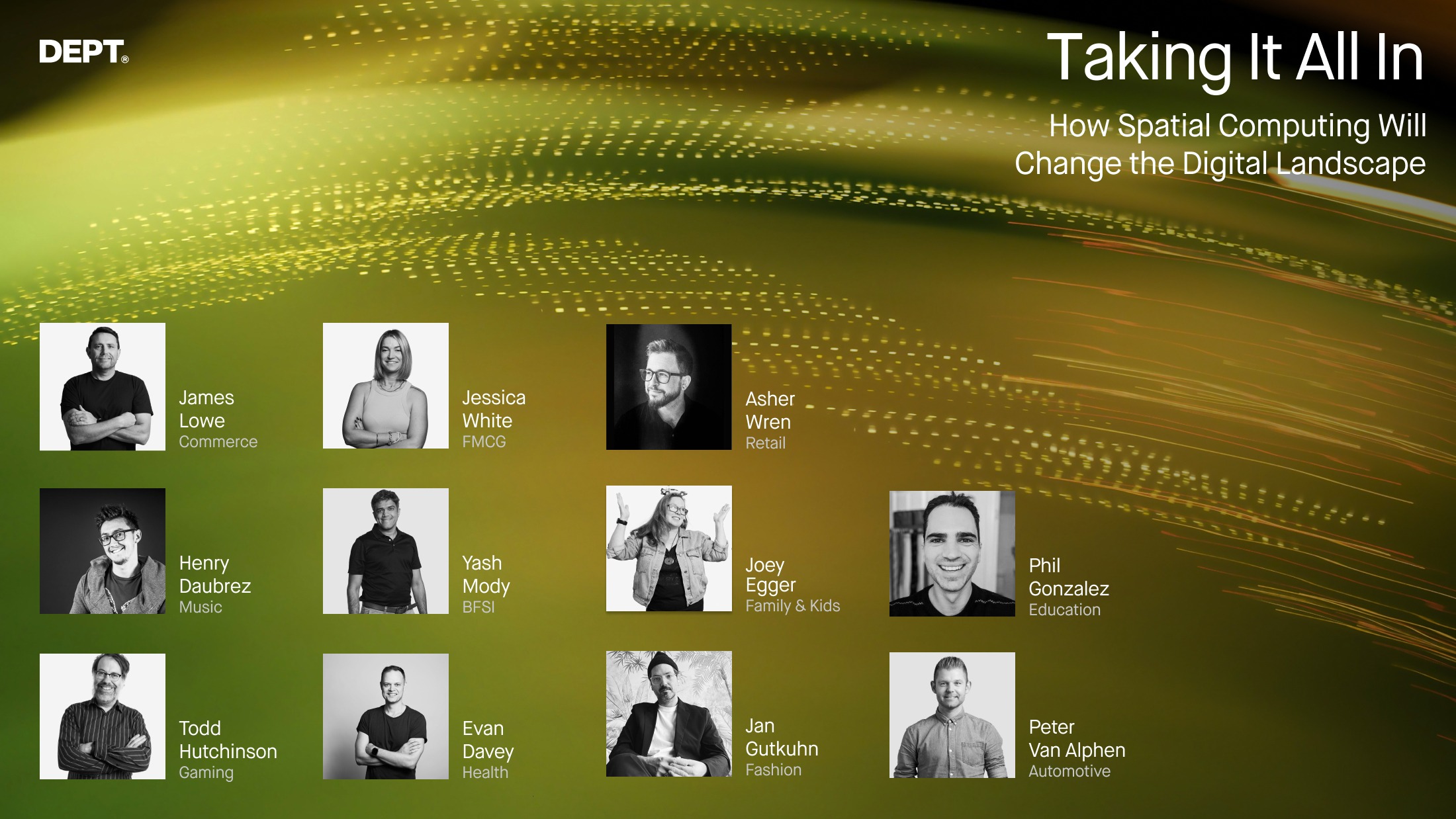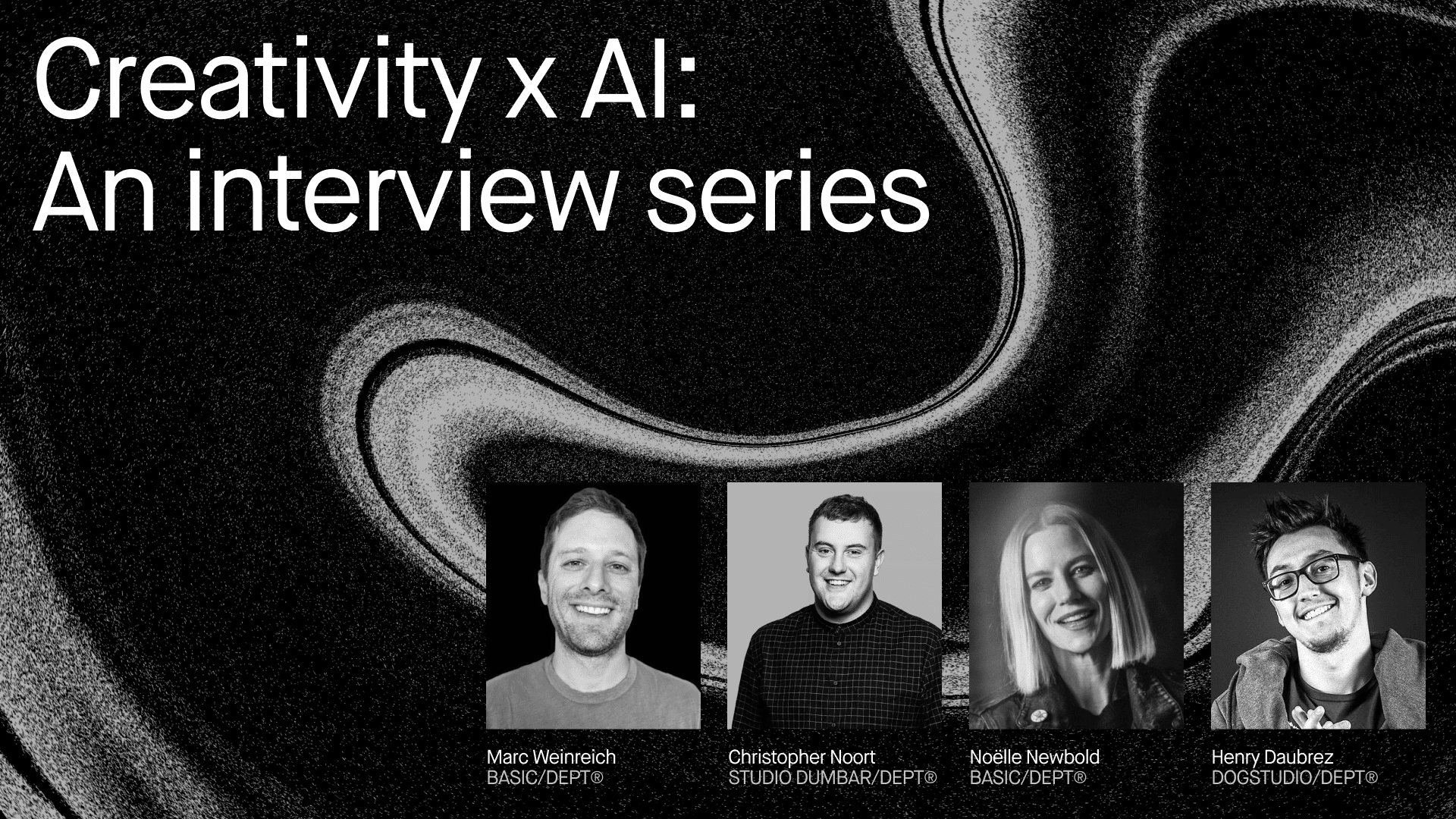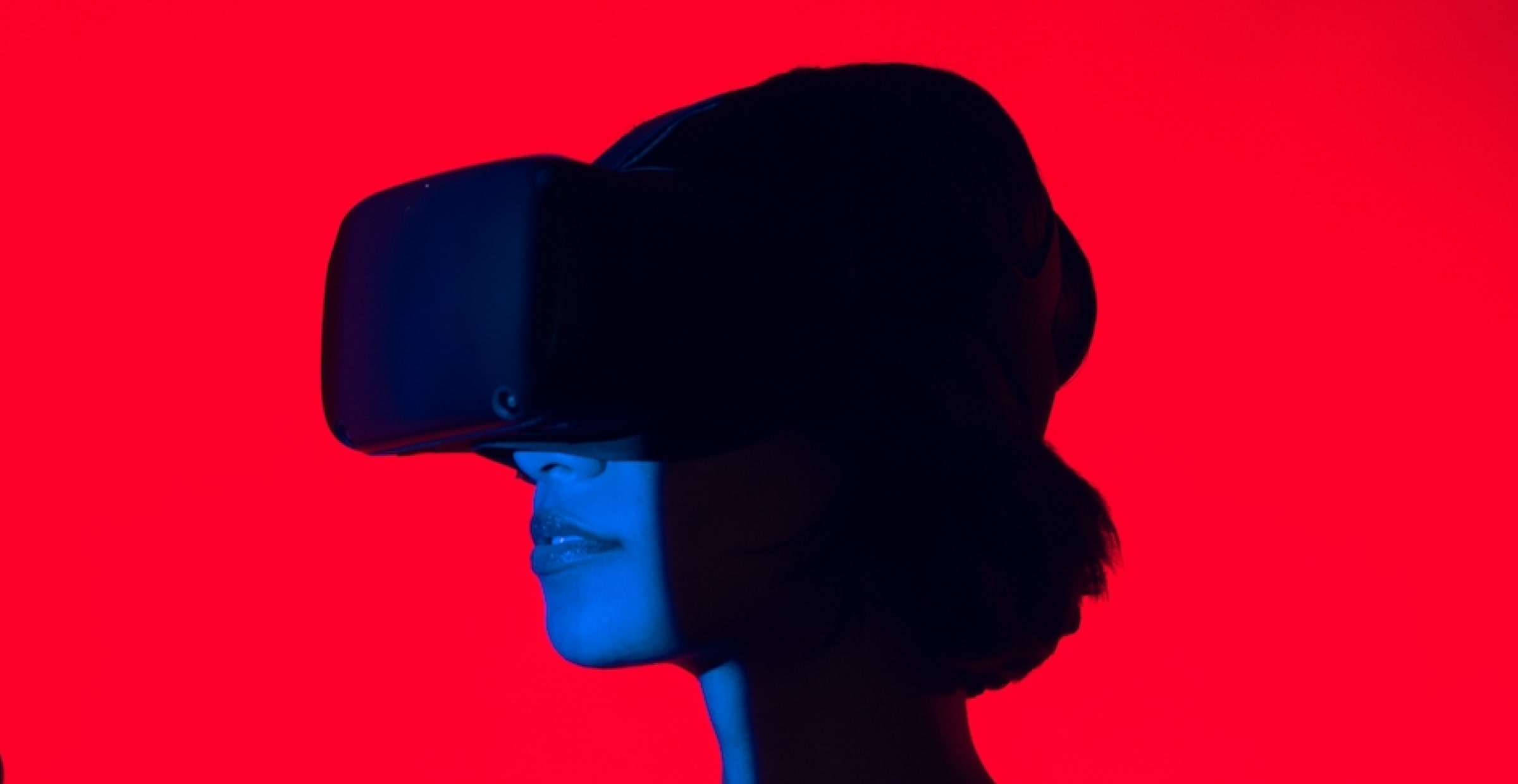How spatial computing will change the digital landscape


Commerce
James Lowe – VP Commerce APAC
The goal of an e-commerce website is, ideally, to sell products, and they do that by simulating real life shopping experiences online. We add products to a virtual ‘cart’ and virtually visit the ‘checkout.’ The reality is, though, that there is still a huge gap between real-world touch and feel experiences talking to a salesperson and online shopping. This is changing.
From immersive experiences, viewing a rug in your room or a hologram of yourself sized with those new jeans, the effect of spatial computing in reshaping the e-commerce experience will be massive. It’s not only about being able to try out that rug in your living room but how that will affect light and sound, changing your experience of your own home forever.
Spatial computing, whether AR, VR, or any reality that edges us closer to replicating real-world shopping and in-store personalisation, will change how we shop forever. We have only scratched the service.
The targeted use of these technologies will be important. Successful brands will use spatial computing subtly (not everyone has an Apple Vision Pro!) and AI passively to bring users on the journey where required and blow our minds at other touch points in the mixed reality commerce journeys of the future.
This is a moment for commerce brands to set themselves apart in a field wide open with opportunity. Brands that continue creating immersive, personalised shopping experiences, replicating and augmenting real word experiences as the technology evolves, will emerge as leaders.
Best encounter with spatial computing so far?
I bought a trampoline for the kids for Christmas this year. The AR feature on the site allowed me to video my front yard in real-time, position the trampoline in the yard, and walk around it, seeing the placement from different angles. I was surprised at how accurate it was. I got my tape measure out to verify (didn’t trust the tech!), and the virtual placement was spot on.
This was a super helpful application of AR enhancing my buying experience. I had limited space in my yard, so this augmented view of my yard sold it for me. AR placing products in situ is not the most cutting-edge example of spatial computing, but it was the best example I have personally experienced and led me to the checkout.

FMCG
Jessica White – General Manager Creative & Content Australia
I’ve been a storyteller my entire life. Sitting around the table with my family, we took turns to see who could tell the best story. I love the creativity of it, the challenge of finding the right hook, and helping brands become famous. Famous in the category, internally, and most importantly, famous with consumers, making their product the one they reach for first.
Fast forward 10 years, storytelling is more diverse than ever, with TikTok as a platform for entertainment, self-expression, and search! Personalisation gives tailored brand experiences across email, social channels, and online shopping. Technology is making it easier and easier to reach consumers and tell them richer stories. Spatial computing is enabling us to seamlessly merge the physical world with the magical world of digital. Picture consumers virtually learning how to brush their teeth properly or wash their hands effectively in their own spaces, testing, learning, and experiencing them firsthand.
The digital world as we know it has changed forever. Things are only going to get more exciting from here. We’re taking storytelling to a new dimension, and I’m here for it!
Best encounter with spatial computing so far?
From virtually trying on beauty products to unlocking a world of interactive content and promotions, spatial computing empowers marketers with the tools to weave captivating stories. Consider the experience of trying on different makeup looks in augmented reality or seamlessly accessing additional information and promotions while browsing in-store. One may be more functional than the other, but both avenues create a richer storyline for consumers to explore, transforming mere transactions into memorable experiences.

Retail
Asher Wren – VP Growth Americas
Spatial computing will change the game in commerce in several ways. From behind-the-scenes operations and logistics like inventory and supply chain management and helping warehouse staff to locate items more efficiently, through to creating more immersive, contextually relevant customer experiences at-home or in-store.
Industries that typically rely on more tactile, white-glove customer journeys — e.g. luxury fashion, auto, home furnishings, etc. will see a completely revolutionised retail experience. Shopping experiences in those industries are increasingly digital. Still, nothing compares to being able to feel the finish on an Eames chair, feel the weight of a Rolex in your hand, or see the movement of a Gucci garment.
Spatial computing will put customers on their catwalks in this season’s must-have, in the driver’s seat of a luxury car, or in a newly decorated and kitted-out home. It’s the next step in bringing elevated shopping experiences for high-ticket items into the home, changing retail forever.
Best encounter with spatial computing so far?
I’m a big fan of using augmented reality to make static artwork come to life. It’s an oldie but a goodie — There’s something very punk rock DIY about the MoMAR concept — a group of artists leveraging augmented reality to overlay digital art onto traditional works of art in galleries.
The concept challenges the notion of what art is and pokes fun at the elitism of the fine art world. On the other end of the spectrum, for businesses, using AR to bring billboards to life can create engaging, buzz-worthy brand activations while also making existing OOH media buys work harder by establishing measurable paths to purchase from static billboards to digital/e-commerce.

Music
Henry Daubrez – CEO & COO Dogstudio/DEPT®
Past the expected entertainment outcome from a device like the Apple Vision Pro, there’s a huge potential for learning new skills.
I used to (badly) play the guitar as a teenager, by myself, at home, and I do remember printing sheet after sheet of chords and going through the painful journey of constantly moving from the sheets to the fretboard. I mean, nothing crazy, but it was still getting in the way of me learning a new skill.
Now, looking at the future of spatial computing and offering information contextually, there’s a future in which learning music can be offered directly in relation to the instrument, showing you the chords next to the fretboard or the notes on top of the piano keys. Even better, leveraging AI, there’s a very short path to suggesting the next note and giving you the fundamentals of improvisation.
This is one simple example but music, being attached to a different of our senses, has the potential to be experienced differently thanks to the evolution of headset technologies.
We’re still early despite the dozens of years separating us from the initial generations of headsets and the most recent ones.
Technology is finally getting to where we can experience the full expected potential: a seamless, integrated, contextual experience intertwined with reality. The Apple Vision Pro and the recent Quest3 are one iteration closer to that dream but not fully there yet.
I’m looking forward to the possibilities of experiencing and learning music (and a lot of other things) in a visual, natural, and neck pain-free manner.
Best encounter with spatial computing so far?
As mentioned, all the passthrough (and therefore avoiding pure VR) experiences around the learning of new skills are fascinating to me, whether it’s about cooking, learning an instrument (check PianoVision), or learning a trade. People directly think about gaming when looking at these devices, but the untapped education market is endless.

BFSI
Yash Moody – CTO APAC
Spatial computing presents an unparalleled opportunity to improve financial literacy worldwide by making complex concepts more accessible and engaging across diverse age groups and demographics. By leveraging immersive technologies, financial education can become more interactive, intuitive, and inclusive, empowering individuals to make informed financial decisions and participate more effectively in the global economy.
The convergence of fintech innovators and traditional financial institutions facilitated by spatial computing can lead to the development of groundbreaking products and methodologies prioritising human-centric design and user experience. This collaboration can drive innovation and efficiency while addressing the evolving needs of consumers in the digital age.
Best encounter with spatial computing so far?
Several financial organisations have explored virtual branches using VR to make banking more accessible and inclusive. This makes banking more cost-efficient, secure, accessible, and personalised.

Family & Kids
Joey Eggar – Executive Director Games & Emerging Tech
When it comes to tech and kids, at the end of the day, it’s not so much about the technology, it’s about the experience.
For kids, it’s about what’s fun, intuitive, and engaging: what can tell a good story? What can provide a cool challenge? And for their caregivers – is my child safe using this device and playing this experience?
It’s our job to create spatial interactive experiences that feel natural to that device and are intuitive and safe for the user to play. We want the experience to work for the end user, not just for the device.
We’ve been working on variations of spatial technology since 2012, kicking off with the award-winning The Hidden Park, which used a form of AR before AR was formally integrated into phones. Since then, we’ve crafted many projects utilising AR with well-known kids’ brands such as The Wiggles and Sesame Street, VR to help kids reduce stress and anxiety during needle procedures with the Webby Award-winning SmileyScope, and with XR currently having fun with some projects that blend mixed reality headsets with real-world experiences.
With all our spatial work, we know that the tech is just a tool, and it’s the enriching experiences it facilitates that truly matter.
Best encounter with spatial computing so far?
It’s very simple, but the XR devices such as APV, Hololens, MetaQuest, and MagicLeap, when you initially map the environment around you. They all do it differently, but I never get bored of it, and it makes me feel like I’m on a Star Trek holodeck.

Education
Phil Gonzalez – Director of Engineering
Spatial computing, along with mixed and augmented reality technology, has the potential to redefine the educational paradigm.
If we were to bring a time traveler 200 years from the past to the present, 99% of our world would look vastly different to them: a classroom, however, would look mostly the same: a set of desks facing a presenter at the front of a room. While online, self-paced, and digital learning has started to take form in the last couple of decades, it still isn’t a stand-in for the in-person experience. You don’t have to look further than standardised test scores dropping dramatically during the COVID-19 lockdowns for evidence of this.
However, this is fortunately on the path towards change. VR/MR headsets allow learners to step into nearly any subject matter virtually. Want to learn about the human body? Shrink yourself down to the size of an organelle and explore it yourself! Perform lab observations in VR and later generate reports about those observations on a traditional computer. Studying WWI? Step into the moment of Archduke Franz Ferdinand’s assassination and political turmoil and speak with virtualised eyewitnesses.
MR/VR also enables a sense of presence missing from virtual learning experiences. Will an online instructor know if students are engaged and understanding the material, or disengaged and lost? Live video calls can sometimes help, but monitoring the facial expressions of 20+ students over Zoom doesn’t always work. Newly developed VR technologies enable eye tracking and facial gesture mapping that allow virtual avatars to appear confused, lost, or engaged and learning.
Best encounter with spatial computing so far?
Arizona State University’s DreamScape Learn. I had the pleasure, last year, of demoing some of the courses they offer and was blown away by the level of interactivity.

Gaming
Todd Hutchinson – Creative Director
Virtual Reality has never managed to live up to the promise of Ready Player One. Although it’s not surprising, only a select few are happy to block out their reality in favour of a digital one, and then there’s the motion sickness… blergh.
But spatial computing is a very different and vomit-free beast. It offers a brave new future, where real and digital worlds collide to make both cutting-edge and simple intuitive experiences.
Once the hardware reaches the point of looking like ordinary glasses, I can imagine everyone wearing them to engage in daily digital activities. From a gaming perspective, there are countless opportunities to integrate gameplay with the world around. Hide behind the couch to avoid enemy fire in an FPS, solve escape room experiences in your bedroom, or create and manage complex cities in your lounge.
The future seems bright, I gotta wear [spatial computing] shades.
Best encounter with spatial computing so far?
First Encounters. It’s a very simple and fun game in which players blast away at fuzzy little aliens to capture as many as they can before time runs out. The cool integration of spatial computing is that it starts off in the player’s room, and as they fire their blasters, they blow holes in their walls to reveal an alien world beyond. The aliens move from their alien world into the player’s room, and the player has to walk around to find hidden aliens. By the time the round is up, the walls are destroyed, and the player is now in the alien world.

Health
Evan Davey – VP Growth APAC
In healthcare, spatial computing isn’t just about enhancing patient experiences; it’s about revolutionising care delivery. Imagine surgeons seamlessly accessing patient data in real-time during procedures or medical professionals conducting virtual simulations to refine treatment plans.
Spatial computing empowers us to bridge geographical gaps, providing remote consultations and monitoring for patients in rural areas. However, it’s not without its challenges—ensuring data security and privacy remains paramount.
Yet, the potential to improve outcomes and streamline processes is undeniable. As we navigate this transformative landscape, collaboration between healthcare providers, technologists, and policymakers will be crucial in realising the full benefits of spatial computing for the industry.
Best encounter with spatial computing so far?
I’m absolutely taken by the breadth of use cases for the Apple Vision Pro, so it’s hard to nail it down to just one example. One experience I’m particularly looking forward to being an Australian – and air travel out of the country taking at least 8 hours – is taking an Apple Vision Pro onto the plane, watching movies in what will feel like a theatre rather than a cramped economy seat and working in that same seat on a projected 4K screen, rather than bending over my iPad. Add to that the privacy that comes with the APV, and I’m pumped to get onto that plane!

Fashion
Jan Gutkuhn – Director Web3
Spatial computing was invented for the fashion industry. In the world of fashion, the allure of the runway is undeniable. Yet, the digital representation is full of limitations and disappointments. Spatial computing offers a lifeline, bridging the gap between the real and the virtual. It’s a designer’s dream becoming reality, setting the industry free.
The biggest opportunity lies in creating more human and emotional experiences through 3D – directly from the creative director’s imagination. No proxy, no samples, no shootings. Fully immersive experiences evoke a sense of wonder and delight – something missing in the realm of the 2D screens and CR-optimised online shops of today.
Imagine entering an immersive, highly emotional brand universe, seeing yourself in the latest runway looks, and chatting with a virtual stylist who understands your unique tastes and preferences based on your body measurements. Or attending a virtual fashion show where you can interact with models and designers in real time. For as long as you want – and you will want to stay and get lost, and shop…
These are the experiences that bring fashion to life in ways that were previously unimaginable. It allows brands to democratise the front row, inviting anyone and everyone to immerse themselves into the brand’s universe like never before.
This is it. Unlimited creativity and pure emotion. Directly from the designer’s brain into your Apple Vision Pro.
Best encounter with spatial computing so far?
Our work with H&M on creating their virtual showroom. 69% of the respondents said that the showroom had piqued their interest in a virtual H&M brand experience.

Automotive
Peter Van Alphen – Strategy Director Growth Europe
The world of mobility is rapidly changing from physical environments to digital experiences. Legacy manufacturers and emerging industry players are reinventing and rethinking the traditional paradigms. Electric vehicles, digital-first buying models, technology-led information systems, and self-driving solutions are leading the way in society and will become the standard.
In the realm of automotive, spatial computing is reshaping the driving experience, both within and beyond the vehicle’s interior. Innovations such as Augmented Reality Dashboards, Advanced Driver Assistance Systems, Predictive Maintenance, and Smart Parking Solutions exemplify the dynamic changes transforming the automotive industry. I am particularly excited about the potential of spatial computing to address traffic congestion and enhance driving safety.
At DEPT®, we’re at the forefront of innovation in the automotive landscape. We’re strategically positioned to provide comprehensive end-to-end customer experiences, leveraging the power of AI, technology, creativity, and media.
Best encounter with spatial computing so far?
I am deeply impressed by the spatial computing solutions that Tesla is developing and integrating into their vehicles. From the adaptive cruise control feature to the sophisticated infotainment systems and the advanced navigation system capable of recognising environmental surroundings, Tesla is enhancing driving safety and security significantly. I eagerly anticipate the innovations and advancements that lie ahead.
Fostering creativity and curiosity
Spatial computing has the power to revolutionise how we interact with technology, reshape industries, and redefine user engagement. It’s a call to action for businesses to embrace this technology as a catalyst for innovation and growth, unlocking new opportunities to create immersive, personalised experiences that transcend traditional boundaries.
However, realising this potential requires overcoming challenges such as data security, logistical integration, and ensuring equitable access. Despite these hurdles, the consensus is clear: the future of spatial computing is limitless, and it’s up to businesses to seize the moment and shape the digital landscape of tomorrow.
With a deep understanding of emerging technologies and a track record of delivering cutting-edge digital solutions, our teams at DEPT® are uniquely positioned to guide businesses through the complexities of spatial computing integration.
How successful brands will use AI in the future: An interview series





